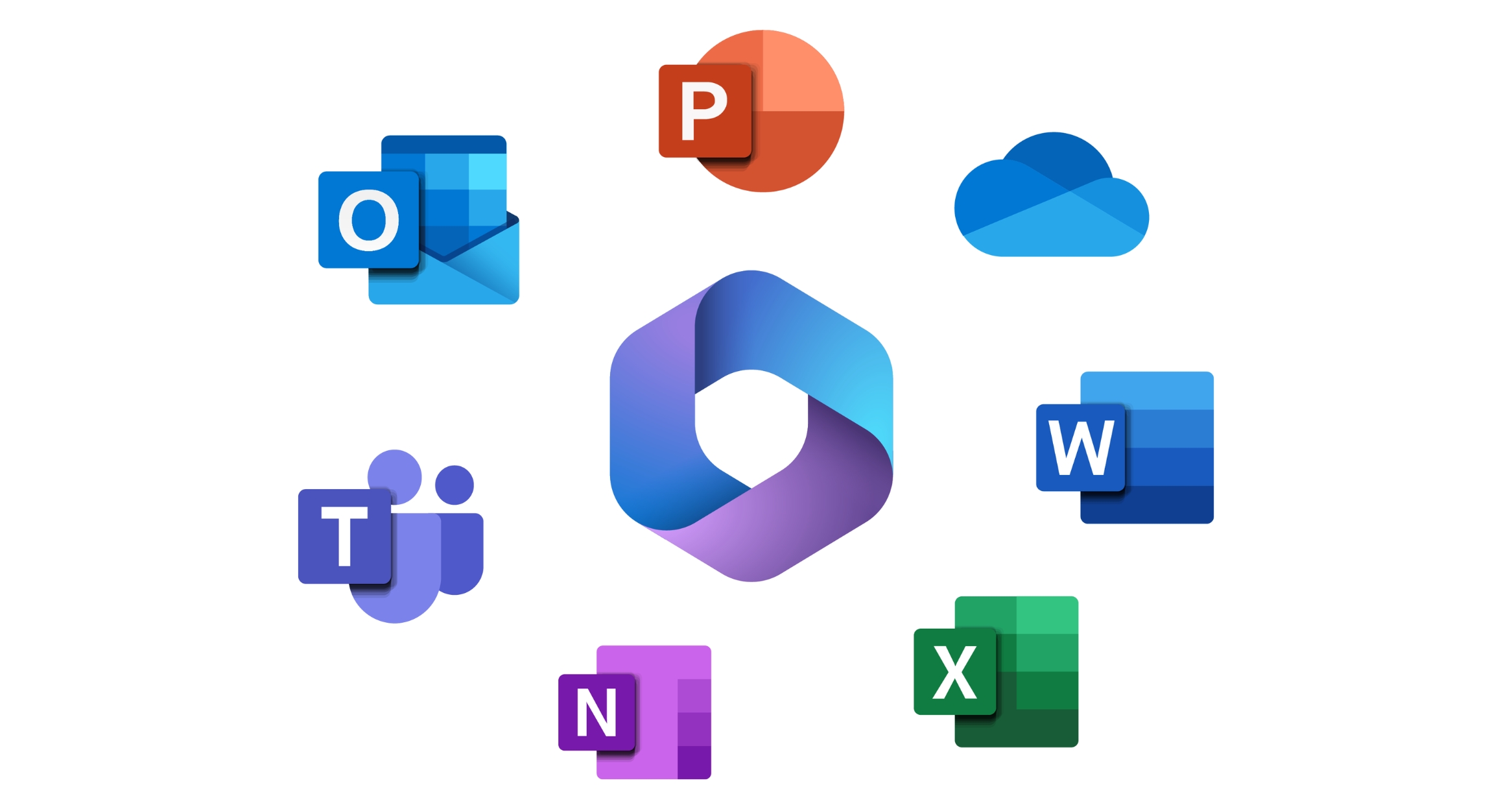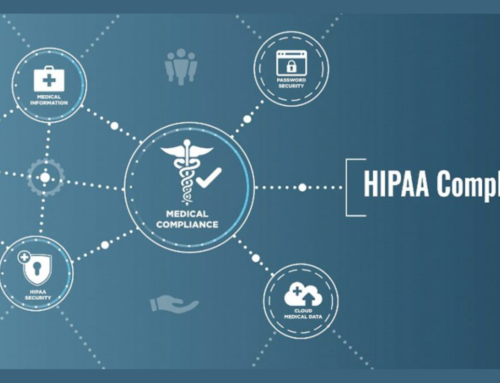Introduction
In the dynamic landscape of the modern workplace, the advent of remote work has reshaped how organizations operate, bringing to the forefront the need for robust digital solutions. Among the myriad of tools available, Microsoft 365 has emerged as a linchpin in enabling and maximizing remote work productivity. This section provides a comprehensive overview of the significance of Microsoft 365 in the realm of remote work, unraveling the key features and functionalities that make it an indispensable ally in the pursuit of seamless collaboration and efficiency.
The Evolution of Remote Work
The landscape of work has undergone a profound transformation, with remote work becoming not just a necessity but a strategic imperative. Organizations worldwide have embraced the flexibility that remote work offers, allowing teams to transcend geographical boundaries and collaborate seamlessly. In this paradigm shift, the role of technology has become pivotal, and Microsoft 365 stands as a beacon, offering a comprehensive suite of applications and services designed to empower remote teams.
Remote Work Productivity with Microsoft 365
At the heart of this transformation is the keyword “Remote work productivity with Microsoft 365.” It encapsulates the core mission of Microsoft 365 in the remote work ecosystem — not merely providing tools but enhancing productivity, collaboration, and efficiency in a virtual environment. As we delve into the multifaceted aspects of Microsoft 365, it becomes evident that the platform is not just a collection of applications; it’s a catalyst for remote work success.
The Integrated Power of Microsoft 365
Microsoft 365, comprising applications such as Word, Excel, PowerPoint, Teams, and more, offers a holistic and integrated approach to remote work. Each application plays a unique role in the digital workflow, collectively forming a dynamic ecosystem that transcends traditional boundaries. Word and Excel facilitate document creation and data analysis, Teams revolutionizes virtual collaboration, and SharePoint serves as a hub for seamless document management.
Fostering Collaboration Beyond Distances
One of the defining features of Microsoft 365 is its ability to foster collaboration beyond physical confines. Microsoft Teams, a cornerstone of the suite, emerges as a virtual workspace where team members can connect, chat, host meetings, and collaborate on documents in real-time. This convergence of communication and collaboration not only bridges the geographical gap but also enhances the sense of connectivity and teamwork.
Enhancing Document Accessibility with OneDrive
In the realm of remote work, the accessibility of documents is paramount. OneDrive, a cloud-based storage solution within Microsoft 365, ensures that files are not tethered to a specific device or location. This not only facilitates secure file access but also promotes collaborative editing, allowing multiple users to work on documents simultaneously, irrespective of their physical location.
Navigating Remote Work Challenges with Outlook
Remote work often brings challenges in managing communication and schedules. Outlook, a stalwart in email and calendar management, proves invaluable in streamlining these aspects. Its features enable efficient email organization, scheduling of virtual meetings, and the synchronization of calendars, ensuring that remote teams remain organized and connected.
In the subsequent sections, we will delve deeper into the specific applications and features of Microsoft 365, exploring how each contributes to the overarching goal of enhancing remote work productivity.
Microsoft 365 Applications for Remote Productivity

In the expansive realm of Microsoft 365, a suite of applications stands ready to empower remote teams, each playing a distinct role in enhancing collaboration, productivity, and efficiency. This section provides an overview of key applications — Word, Excel, PowerPoint, and Teams — and explores tailored subtopics showcasing their unique contributions to remote work, all under the overarching keyword: “Microsoft 365 remote collaboration.”
- Microsoft Word: Crafting Seamless Documents from Anywhere
Overview:
Microsoft Word, a cornerstone of the Microsoft 365 suite, transcends its traditional role as a word processor in the context of remote work. It serves as a collaborative canvas where teams can seamlessly create, edit, and review documents from different locations.
Subtopics for Remote Use:
Real-time Collaboration: Explore the “Share” and “Comments” features to collaborate with team members simultaneously on documents.
Cloud-Based Editing: Leverage OneDrive integration for secure cloud storage, enabling access and edits from any device.
- Microsoft Excel: Data Analysis and Collaboration Unleashed
Overview:
Excel transforms into a dynamic tool for remote teams, facilitating not only data analysis but also collaborative decision-making. Its functionality extends beyond individual number crunching to team-based insights.
Subtopics for Remote Use:
Collaborative Workbooks: Learn to co-author Excel workbooks, allowing multiple team members to contribute in real-time.
Power BI Integration: Explore the integration with Power BI for advanced data visualization and sharing insights with the team.
- Microsoft PowerPoint: Dynamic Presentations in a Virtual World
Overview:
PowerPoint takes center stage in remote presentations, offering a platform for creating engaging slideshows that captivate virtual audiences. Its features extend beyond traditional presentations, fostering interactive communication.
Subtopics for Remote Use:
Online Presentations: Utilize the “Present Online” feature to conduct virtual presentations with real-time audience interaction.
Collaborative Editing: Discover how multiple contributors can enhance a presentation simultaneously, ensuring a polished end product.
- Microsoft Teams: The Epicenter of Remote Collaboration
Overview:
Teams emerges as the epicenter of collaboration within Microsoft 365, offering a comprehensive platform where team members can connect, communicate, and collaborate seamlessly.
Subtopics for Remote Use:
Virtual Meetings: Harness the power of Teams for virtual meetings, including video calls, screen sharing, and file collaboration.
Chat and Channels: Explore the versatility of chat for quick communication and channels for organized team discussions.
Microsoft 365 Remote Collaboration
The keyword “Microsoft 365 remote collaboration” encapsulates the essence of this section — the understanding that the applications within the suite are not isolated tools but interconnected components fostering collaboration from any location. As we explore the functionalities of Word, Excel, PowerPoint, and Teams in the subsequent sections, the overarching goal is to equip remote teams with the knowledge to harness these applications effectively, ensuring a seamless and productive collaborative experience.
In the next segment, we will delve deeper into the specific functionalities of Microsoft Teams, uncovering how it transforms remote communication and collaboration into a dynamic and interactive process.
Teams: The Hub for Remote Collaboration

Microsoft Teams emerges as the nucleus of remote collaboration within the Microsoft 365 suite, providing a robust platform where teams can seamlessly connect, communicate, and collaborate. This section delves into the key features that make Teams an essential hub for remote work, encompassing virtual meetings, chat functionalities, file sharing capabilities, and the strategic integration with other Microsoft 365 apps.
- Virtual Meetings: Engaging and Inclusive
Features for Virtual Meetings:
Microsoft Teams redefines the landscape of virtual meetings, offering features that transcend the limitations of physical presence.
Video Conferencing: Conduct face-to-face meetings, fostering a sense of connection among remote team members.
Screen Sharing: Share presentations, documents, or applications, enabling collaborative discussions.
Tips for Seamless Virtual Meetings:
- Meeting Scheduling: Utilize Teams to schedule and organize meetings, ensuring alignment with participants’ calendars.
- Meeting Recordings: Leverage the recording feature for those unable to attend, creating an accessible repository of discussions.
- Chat Functionality: Real-Time Collaboration at Your Fingertips
Features for Chat:
Teams’ chat functionality transcends traditional messaging, providing a dynamic space for real-time collaboration.
- Individual and Group Chats: Facilitate one-on-one or group discussions, ensuring effective communication channels.
- @Mentions and Notifications: Use @mentions to draw attention to specific messages, streamlining communication amidst a flurry of messages.
Enhancing Collaboration through Chat:
- File Sharing in Chat: Seamlessly share files within chat conversations, promoting collaborative editing and feedback.
- Emoji Reactions: Express sentiments through emoji reactions, fostering a more engaging and interactive chat experience.
- File Sharing Capabilities: Centralized Collaboration
Features for File Sharing:
Teams serves as a centralized hub for file sharing, streamlining collaborative efforts on documents and projects.
- OneDrive Integration: Integrate with OneDrive for secure cloud storage and easy access to shared files.
- Version Control: Track document versions within Teams, ensuring that teams work with the latest iterations.
Best Practices for File Sharing:
Channel-based File Organization: Organize files within specific channels to maintain a structured approach.
- Collaborative Editing: Encourage collaborative editing, allowing multiple team members to contribute to a document concurrently.
- Integrating Teams with Other Microsoft 365 Apps: A Cohesive Ecosystem
Integration Possibilities:
Teams goes beyond standalone functionality by seamlessly integrating with other Microsoft 365 apps, creating a cohesive ecosystem.
- Outlook Integration: Schedule Teams meetings directly from Outlook, streamlining meeting organization.
- SharePoint Integration: Leverage SharePoint for robust document management, enhancing collaboration within Teams.
Strategic Integration for Efficiency:
- Power Automate Integration: Automate workflows by integrating Teams with Power Automate, reducing manual tasks.
- App Integrations: Explore a myriad of app integrations, tailoring Teams to specific team and organizational needs.
Remote Communication with Microsoft Teams
“Remote communication with Microsoft Teams” encapsulates the essence of this section — Teams is not merely a communication tool; it’s the linchpin of remote collaboration. As we navigate through the diverse features and integration possibilities, the goal is to equip remote teams with the knowledge to leverage Teams as a dynamic hub, fostering effective and efficient communication and collaboration.
OneDrive: Cloud-Based File Access and Sharing

In the landscape of remote collaboration, OneDrive takes center stage as a cloud-based powerhouse within Microsoft 365, offering secure and convenient file access from any location. This section explores the key functionalities of OneDrive, emphasizing its role in providing a seamless and collaborative environment for document storage and sharing.
- Securely Accessing Files from Anywhere
Remote Accessibility Features:
OneDrive redefines accessibility by ensuring that files are not tethered to a specific device or location, promoting flexibility for remote teams.
- Cross-Device Synchronization: Access files seamlessly across multiple devices, ensuring continuity in remote workflows.
- Offline Access: Enable offline access to critical files, allowing team members to work even without a constant internet connection.
Security Measures for Remote Access:
- End-to-End Encryption: Benefit from end-to-end encryption, ensuring that files remain secure during transit and storage.
- Multi-Factor Authentication: Implement multi-factor authentication for an additional layer of security, safeguarding sensitive documents.
- Collaborative Document Editing in Real-Time
Real-Time Collaboration Features:
OneDrive transforms document collaboration into a dynamic and real-time experience, enhancing the efficiency of remote teams.
- Co-Authoring Documents: Simultaneously edit documents with team members, fostering collaborative content creation.
- Version History: Track changes and revert to previous versions with ease, ensuring document integrity throughout the collaborative process.
Optimizing Collaboration for Remote Teams:
Commenting and Annotations: Use comments and annotations to provide feedback within documents, enhancing the collaborative editing process.
- Document Locking: Avoid conflicts by utilizing document locking features, preventing multiple users from editing the same document simultaneously.
Remote File Access with OneDrive
“Remote file access with OneDrive” encapsulates the essence of this section — the recognition that OneDrive serves as more than just a file storage solution; it’s a dynamic tool for secure, remote collaboration. As we delve deeper into the capabilities of OneDrive, the goal is to empower remote teams with the knowledge to leverage its cloud-based features, ensuring that documents are not just stored but actively contribute to the collaborative efforts of the team.
SharePoint: Building Collaborative Workspaces
In the era of remote work, SharePoint stands as a versatile pillar within Microsoft 365, providing the foundation for collaborative workspaces that transcend geographical boundaries. This section explores the key functionalities of SharePoint, emphasizing its role in creating team-centric sites for project collaboration and implementing robust document management with version control.
- Creating Team Sites for Project Collaboration
Team Site Features:
SharePoint empowers remote teams by providing a dedicated space for collaborative project efforts, fostering transparency and seamless communication.
- Customizable Team Sites: Create team sites tailored to project needs, incorporating relevant tools and resources.
- Task Lists and Calendars: Integrate task lists and calendars into team sites, ensuring a centralized hub for project management.
Optimizing Team Collaboration:
- Access Controls: Implement granular access controls to ensure that team members have appropriate permissions, safeguarding sensitive project information.
- Announcements and Updates: Utilize announcements and updates to keep team members informed about project milestones and developments.
- Document Management and Version Control
Document Management Features:
SharePoint serves as a robust document management platform, offering functionalities that enhance organization, accessibility, and collaboration on project-related documents.
- Centralized Document Repository: Store project documents in a centralized repository, facilitating easy access for all team members.
- Metadata and Tagging: Enhance document organization by utilizing metadata and tagging features, simplifying document retrieval.
Version Control for Document Integrity:
- Automated Versioning: Enable automated versioning for documents, ensuring a chronological record of changes made over time.
- Document Check-Out/Check-In: Implement document check-out/check-in to prevent conflicts during collaborative editing, maintaining document integrity.
Remote Collaboration with SharePoint
“Remote collaboration with SharePoint” encapsulates the essence of this section — SharePoint serves as more than a document repository; it’s a dynamic platform for remote collaboration. As we explore its capabilities in creating team sites for project collaboration and implementing robust document management, the goal is to equip remote teams with the knowledge to leverage SharePoint as a centralized hub for collaborative workspaces.
Outlook: Efficient Email and Calendar Management
In the realm of remote work, Outlook emerges as a linchpin within the Microsoft 365 suite, seamlessly integrating efficient email and calendar management. This section explores key tips for managing emails in a remote setting and unveils the array of calendar features within Outlook designed to streamline remote scheduling.
- Tips for Managing Emails in a Remote Setting
Email Management Strategies:
Outlook equips remote workers with tools to not only manage but master their email communication, ensuring that the virtual inbox remains organized and productive.
- Focused Inbox: Leverage the Focused Inbox feature to automatically sort important emails, minimizing distractions.
- Rules and Filters: Set up rules and filters to categorize and prioritize emails, streamlining the organization of incoming messages.
Optimizing Email Workflow:
- Quick Steps: Utilize Quick Steps for one-click actions, such as moving emails to specific folders or forwarding to colleagues.
- Scheduling Email Delivery: Schedule email delivery during optimal times to respect different time zones and enhance communication effectiveness.
- Calendar Features to Streamline Remote Scheduling
Calendar Management Essentials:
Outlook’s calendar features go beyond basic scheduling, offering a suite of tools to simplify remote scheduling and ensure that virtual meetings and appointments align seamlessly.
- Time Zone Management: Master time zone differences by utilizing Outlook’s time zone features, avoiding scheduling conflicts in a globalized work environment.
- Appointment Scheduling: Explore the appointment scheduling feature to streamline setting up one-on-one meetings or interviews.
Enhancing Collaboration through Calendar:
- Meeting Insights: Leverage Meeting Insights to access relevant emails, attachments, and notes associated with scheduled meetings.
- Shared Calendars: Utilize shared calendars to foster team visibility into each other’s schedules, promoting collaborative planning.
Remote Email Management with Outlook
The keyword “Remote email management with Outlook” encapsulates the essence of this section — Outlook is not just an email client; it’s a comprehensive tool for efficient email and calendar management in the remote work landscape. As we explore the tips for email management and delve into the calendar features designed for remote scheduling, the goal is to empower remote teams with the knowledge to harness Outlook’s capabilities for seamless communication and scheduling.
Security Measures for Remote Work
As the landscape of work extends into the virtual realm, ensuring the security of sensitive information becomes paramount. Microsoft 365 offers a robust set of security features to safeguard remote work environments. This section delves into key security measures, including multi-factor authentication and other features, along with best practices to secure remote access.
- Multi-Factor Authentication and Other Security Features
Multi-Factor Authentication (MFA):
MFA adds an extra layer of protection by requiring users to provide multiple forms of identification before accessing accounts.
- Enabling MFA: Ensure MFA is enabled for all users, enhancing the security of account logins.
- App-Specific Passwords: Implement app-specific passwords for applications that don’t support MFA, maintaining security without compromising functionality.
Conditional Access Policies:
Leverage conditional access policies to control access based on specific conditions, bolstering security measures.
- Device Compliance Checks: Implement policies that assess device compliance before granting access, enhancing security on various devices.
- Location-Based Policies: Restrict access based on the geographic location of the user, adding an additional layer of security.
- Best Practices for Securing Remote Access
Secure Access Points:
Implement best practices to ensure secure access points, minimizing vulnerabilities in the remote work environment.
- VPN Usage: Encourage the use of Virtual Private Networks (VPNs) to create secure connections for remote access.
- Network Encryption: Utilize network encryption to protect data transmitted between remote devices and the corporate network.
Device Security:
Promote best practices for securing devices to prevent unauthorized access and data breaches.
- Device Encryption: Require device encryption to protect data stored on laptops and other devices.
- Remote Wipe Capability: Implement remote wipe capabilities for lost or stolen devices, safeguarding sensitive information.
Microsoft 365 Remote Security
The keyword “Microsoft 365 remote security” encapsulates the essence of this section — security is not an afterthought but an integral part of the remote work equation. As we explore the multi-faceted security measures, including MFA and conditional access policies, and delve into best practices for securing remote access, the goal is to fortify the remote work environment within the Microsoft 365 ecosystem.
Customizing Microsoft 365 for Remote Teams
As organizations navigate the remote work landscape, the customization of Microsoft 365 emerges as a strategic imperative. This section explores the process of tailoring Microsoft 365 settings to optimize remote collaboration and introduces the concept of personalized learning paths, ensuring that training initiatives align with organizational needs and individual roles.
- Tailoring Microsoft 365 Settings for Remote Collaboration
Customization for Remote Workflows:
Customizing Microsoft 365 settings enables organizations to create an environment that caters specifically to the nuances of remote collaboration.
- Communication Preferences: Customize communication settings in Teams to suit the preferred modes of interaction for remote teams.
- Document Sharing Defaults: Set default document sharing permissions in OneDrive and SharePoint, ensuring a balance between accessibility and security.
Adaptability to Organizational Dynamics:
- Channel Naming Conventions: Establish standardized naming conventions for channels in Teams, promoting consistency in communication and file organization.
- Calendar Customization: Tailor calendar views and sharing settings in Outlook, ensuring alignment with the scheduling preferences of remote teams.
- Personalized Learning Paths for Remote Training
Understanding Individual Needs:
Recognizing that one size does not fit all, personalized learning paths address the diverse skill sets and roles within remote teams.
- Skills Assessment: Conduct skills assessments to identify knowledge gaps and areas that require focused training.
- Role-Based Training Tracks: Develop role-specific training tracks, ensuring that team members receive targeted and relevant learning content.
Promoting Continuous Learning:
- Microlearning Modules: Implement microlearning modules for bite-sized, easily digestible content that facilitates continuous learning.
- Feedback Mechanisms: Introduce feedback mechanisms to gauge the effectiveness of training and identify areas for improvement.
Customizing Microsoft 365 for Remote Work
The keyword “Customizing Microsoft 365 for remote work” encapsulates the essence of this section — recognizing that a tailored approach is essential for success in the remote work landscape. Whether it’s adapting settings for optimal collaboration or creating personalized learning paths, the goal is to customize Microsoft 365 to be an enabler of efficiency and proficiency in the unique context of remote work.
Overcoming Remote Work Challenges with Microsoft 365
In the dynamic landscape of remote work, challenges are inevitable, but Microsoft 365 stands as a powerful ally in mitigating these issues. This section explores common remote work challenges and unveils Microsoft 365 solutions to address them. Additionally, troubleshooting tips are provided to ensure a seamless remote experience for teams leveraging the suite’s capabilities.
- Addressing Common Remote Work Issues with Microsoft 365 Solutions
Challenge: Collaboration Barriers:
Solution: Teams Integration: Foster seamless collaboration with Microsoft Teams, breaking down communication barriers and enabling real-time collaboration on projects.
Challenge: Document Versioning Conflicts:
Solution: OneDrive Version Control: Utilize version control in OneDrive to track changes and resolve conflicts, ensuring document integrity in collaborative efforts.
Challenge: Inefficient Communication:
Solution: Outlook Features: Optimize communication efficiency by leveraging Outlook’s features such as focused inbox, rules, and quick steps to manage emails effectively.
- Troubleshooting Tips for a Seamless Remote Experience
Issue: Connectivity Challenges:
Tip: Network Stability: Ensure a stable network connection by using VPNs for secure access and troubleshooting connectivity issues promptly.
Issue: Application Performance:
Tip: Software Updates: Regularly update Microsoft 365 applications to the latest versions to benefit from performance improvements and bug fixes.
Issue: Learning Curve for New Features:
Tip: Training Resources: Provide access to Microsoft Learn and other training resources to assist team members in navigating new features and functionalities.
Conclusion
As organizations embark on the journey of remote work, Microsoft 365 emerges not just as a toolset but as a transformative force, streamlining collaboration, enhancing productivity, and addressing challenges inherent in the virtual workspace.
From the foundational understanding of Microsoft 365 applications to advanced customization for remote teams, this comprehensive guide has delved into every facet. The significance of training, both online and in-person, has been underscored, with an emphasis on tailored learning paths for diverse roles.
Security measures, troubleshooting tips, and solutions to common challenges highlight Microsoft 365’s adaptability to the demands of remote work. The guide concludes with a focus on continuous improvement, providing insights into overcoming obstacles and maximizing the suite’s potential.
In the evolving landscape of remote work, Microsoft 365 stands as a dynamic ally, not just meeting but exceeding the demands of the virtual workplace. By leveraging the insights and tips provided, organizations can empower their teams to navigate the complexities of remote work successfully.








